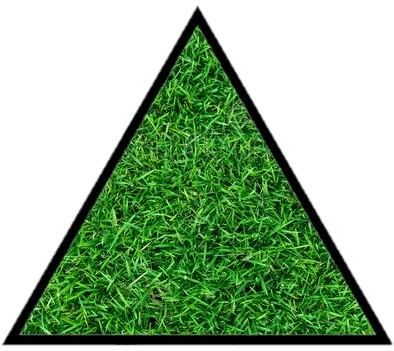Understanding the perimeter of a shape is a fundamental concept in geometry, and when it comes to triangles, it’s remarkably straightforward. Imagine you’re planning to put a decorative border around a triangular flower bed, or perhaps you’re framing a triangular piece of artwork. In both scenarios, what you need to know is the perimeter – the total distance around the triangle.
While you might encounter triangles in various contexts, from garden designs to mathematical problems, the method to calculate their perimeter remains consistent and easy to grasp. Let’s explore exactly how to find the perimeter of a triangle without any complex formulas, just simple addition.
Understanding Perimeter: The Distance Around
Perimeter, in its essence, is the measurement of the outer boundary of any two-dimensional shape. For a triangle, which is a polygon with three sides, the perimeter is simply the sum of the lengths of these three sides. Think of it as taking a walk around the edge of the triangle; the total distance you walk is its perimeter. It’s a linear measurement, meaning it’s expressed in units of length such as centimeters, meters, inches, or feet.
Consider our triangular yard again. To build a fence, we need to know the total length of the boundary. This length is the perimeter.
As shown, if the sides of our triangular yard measure 20 meters, 20 meters, and 12 meters, finding the perimeter is as simple as adding these lengths together: 20m + 20m + 12m = 52m. Therefore, the perimeter of the yard is 52 meters.
Step-by-Step Guide to Calculate Triangle Perimeter
To ensure clarity, let’s outline a simple step-by-step process for finding the perimeter of any triangle:
-
Identify the Lengths of All Three Sides: The first step is to know the length of each side of the triangle. These measurements will usually be provided in a problem, or you might need to measure them yourself in a real-world scenario.
-
Add the Lengths of the Three Sides Together: Once you have the lengths of all three sides, simply add them up. If we label the sides of the triangle as side a, side b, and side c, the formula for the perimeter (P) is:
P = a + b + c -
State the Perimeter with the Correct Units: Make sure to include the units of measurement (e.g., cm, m, in, ft) in your final answer. The unit of the perimeter will be the same as the unit used for the sides.
Example:
Let’s say we have a triangle with sides measuring 5 cm, 7 cm, and 9 cm. To find the perimeter:
P = 5 cm + 7 cm + 9 cm = 21 cm
So, the perimeter of this triangle is 21 centimeters.
Perimeter is Universal Across Triangle Types
The beauty of finding a triangle’s perimeter is that the method remains the same regardless of the type of triangle. Whether you are dealing with an equilateral triangle (all sides equal), an isosceles triangle (two sides equal), a scalene triangle (no sides equal), a right triangle (one 90-degree angle), an acute triangle (all angles less than 90 degrees), or an obtuse triangle (one angle greater than 90 degrees), the principle is the same: add the lengths of all three sides.
For instance:
- Equilateral Triangle: If each side of an equilateral triangle is 4 inches, the perimeter is 4 in + 4 in + 4 in = 12 inches.
- Right Triangle: Consider a right triangle with sides 3 cm, 4 cm, and 5 cm. The perimeter is 3 cm + 4 cm + 5 cm = 12 cm.
No matter the angles or side relationships, as long as you know the lengths of the three sides, you can easily calculate the perimeter.
Why is Knowing the Perimeter Important?
Understanding how to calculate the perimeter of a triangle is not just a theoretical exercise; it has practical applications in various real-world situations:
- Construction and Home Improvement: Calculating perimeters is essential for projects like fencing gardens, building triangular patios, or installing baseboards in rooms with triangular sections.
- Design and Crafting: Artists and designers often work with triangular shapes. Knowing how to find the perimeter is useful for calculating materials needed for borders, edges, or frames.
- Navigation and Mapping: Perimeter concepts can be indirectly applied in navigation when calculating distances around triangular routes or areas on maps.
- Mathematics and Education: Perimeter is a foundational concept in geometry, essential for understanding more complex shapes and calculations later on.
Perimeter vs. Area: A Quick Distinction
While we’re focusing on perimeter, it’s helpful to briefly distinguish it from area. Area measures the space inside a two-dimensional shape, whereas perimeter measures the distance around it. For our triangular yard, the perimeter is the length of the fence needed to enclose it, while the area would be the amount of sod needed to cover the ground within the fence.
The formula for the area of a triangle is different (Area = ( frac{1}{2} times base times height )), and involves base and height measurements, which are distinct from the side lengths used for perimeter.
Conclusion: Perimeter Made Simple
Finding the perimeter of a triangle is a fundamental yet simple geometrical task. It involves nothing more than adding the lengths of its three sides. This straightforward approach applies to all types of triangles, making it an accessible concept for anyone to learn and apply. Whether for practical projects or mathematical problem-solving, understanding how to find the perimeter of a triangle is a valuable skill. So, next time you encounter a triangle, you’ll know exactly how to measure its boundary!
